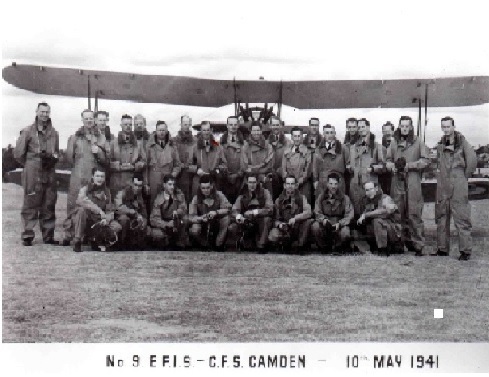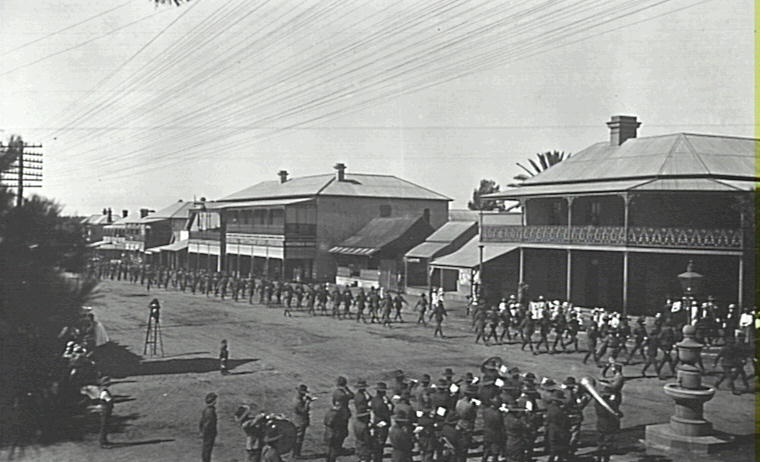A historian grapples with the meaning of Anzac?
For over a century, the Anzac story has been a central part of the Australian cultural identity. The contradictions that have emerged around it have shown no sign of going away. Historians have been unpacking the meaning of Anzac for decades and seem to no closer to any absolute sense.

In a packed auditorium on 20 April 2017, University of Wollongong historian Dr Jen Roberts gave the inaugural public lecture in the Knowledge Series of the University of Wollongong Alumni. Robert’s presentation called ‘Men, myth and memory’ explored the meaning of Anzac and how it is part of Australia’s cultural identity. The attentive audience was a mix of ages and interests, including past military personnel.
One old gentleman in the audience stood up in question time and announced to the audience that he felt that Dr Roberts was ‘a brave lady’ to ‘present the truth’ about the Anzac story in her evocative lecture.

Robert’s compelling presentation left none of the alumnus present in any doubt about the contested nature of Anzac and that there is far from just one truth. Anzac is a fusion of cultural processes over many decades, and it has grown into something bigger than itself.
The Anzac acronym, meaning Australian and New Zealand Army Corps, was first used by General Sir William Birdwood, and its legal status was confirmed by the Australian Government in 1916.
Shifts in meaning
The term Anzac has survived its 1914 imperial connotations and the 1960s social movements. Its supporters have successfully broadened its meaning to embrace all Australian conflicts, including peace missions. Some argue that this has created a dark legacy for currently serving military personnel, while others have chosen to take cheap potshots at those who question the orthodoxy.
The Anzac story needs to be inclusive and not exclusive, and while the current service personnel are the custodians of the Anzac mythology, it can sometimes be a heavy responsibility.

Tensions and contradictions
The Anzac story is ubiquitous across Australia. It is embedded in the heart and soul of every community in the country. Within this narrative, there are contradictions and tensions.
The war that spawned the notion of Anzac was a product of industrial modernism. While the Anzac shrines of commemoration and remembrance across Australia were a product of Interwar modernism, some were the work of Rayner Hoff. Yet these same artists and sculptors were supporters of Sydney bohemianism and its anti-war sentiments.
There are a host of other contradictions that range across issues that include gender, militarism, nationalism, racism, violence, trauma, and homophobia.
Jen Roberts argued in her lecture that the Anzac mythology and iconography point to Australian exceptionalism. She then detailed how this was not the situation. She analysed the horrors of war and how this is played out within the Anzac story.

According to Roberts, the tension within the meaning of Anzac is represented by the official state-driven narrative that stresses honour, duty and sacrifice through commemoration, remembrance and solemnity.
On the hand, the digger mythology’s unofficial story is about a man who is not a professional soldier, egalitarian, loyal to mates and a larrikin – an excellent all-around Aussie bloke.
The official/digger binary highlights the contradictions with the Anzac tradition and its meaning for the military personnel, past and present.
Gunner Bruce Guppy
In 1941 an 18-year-old country lad called Bruce Guppy from the New South Wales South Coast volunteered for service with the 7th Australian Light Horse. Guppy volunteered because his brothers had joined up, and the military looked to have better prospects than working as a dairy hand. Gunner BW Guppy had little time for jingoism or nationalism as a laconic fellow and stated, ‘life is what you make it’.
Bruce Guppy was a yarn-spinning, non-drinking, non-smoking, non-gambling larrikin who saw action in the 1942 Gona-Buna Campaign in New Guinea and later trained as a paratrooper. His anti-war views in later years never stopped him from attending every Sydney Anzac Day March with his unit, 2/1 Australian Mountain Battery, and the camaraderie they provided for him. A lifetime member of the New South Wales Returned and Services League of Australia, he never discussed his wartime service with his family until I married his daughter.

Guppy had five brothers who saw active service in the Pacific conflict, with one brother’s service in British Commonwealth Occupation Forces in Japan cited in Gerster’s Travels in Atomic Sunshine. Guppy would not call himself a hero, yet he willingly participated in Huskisson’s Community Heroes History Project in 2007. Guppy was something of a bush poet and, in 1995, wrote a poem called ‘An Old Soldier Remembers’, which in part says:
An Old Soldier Remembers
‘Memories of those dark days
Come floating back through the haze.
My memory goes back to my mother’s face
Saddened, yes – but filled with grace.
The heartache for mothers – we will never know
For it was for them we had to go.’
Bruce Guppy, Bruce’s Ballads by the Bard from Berry. Guppy/Willis, Berry, 1996.
So it surprised no one when Bruce Guppy made the national media in 2013 when he handed Alice Guppy’s Mother’s Badge and Bar to the Australian War Memorial. Australian War Memorial director Brendan Nelson was moved by his death in 2014 and personally thanked the family for his ‘wonderful’ contribution to the nation.
For Guppy, Anzac Day embraced both meanings expressed by Roberts: The official commemorative remembering; and the larrikin enjoying the company of his mates. The purpose of the Anzac story has changed during Bruce Guppy’s lifetime and the experiences of his digger mates who served in the Second World War.

While many lay claims ownership of the cultural meaning of Anzac, Roberts contends that the organic growth of the Dawn Service is an example of the natural development of Anzac and its sensibilities for different parts of Australian society.
The site and the myth
Roberts examined the two aspects of Anzac mythology – the site and the myth. She maintained that there are many claims to the ownership of the cultural meaning of Anzac. Roberts then pondered the meaning of the slaughter on the Western Front. She asked the audience to reflect on the words of Eric Bogle’s song, And the Band Played Waltzing Matilda covered by an American Celtic band, the Dropkick Murphys.
These comments contrasted with the opening address by an ex-military Alumni organiser. He maintained that the outstanding achievements of the 1/AIF celebrated in military training in Australia today are: the withdrawal of troops at Gallipoli; and the last mounted cavalry charge at Beersheba.
These views contrast with recent research about Gallipoli POWs from Turkish sources that have shown a different side of the story of the conflict.

The Gallipoli peninsula is a site of pilgrimages from Australia while being the only locality in modern Turkey with an English name.
Pilgrims and memory
Roberts contrasted the small group of military pilgrims who went to the 1965 50th anniversary with the lavish all expenses tour of the 1990 75th anniversary sponsored by the Hawke Labor Federal Government. She maintains this was the start of the modern pilgrimage industry.
Roberts drew on personal experience and related anecdotes from her five visits to Gallipoli peninsular with University of Wollongong students. These young people undertook the UOW Gallipoli Study Tour, organised by her mentor, friend and sage UOW Associate-Professor John McQuilton (retired).
Widespread interest in Gallipoli pilgrimages has grown in recent times. Family historians have started searching for their own digger-relative from the First World War. They seek the kudos derived from finding a connection with the Gallipoli campaign and its mythology.
The Howard Federal Government started by promoting soft patriotism, followed by the Abbott Government promoting official celebrations of the Centenary of Anzac.
Official government involvement has unfortunately increased the jingoism of these anniversaries and the noise around the desire by some to acquire the cultural ownership of the Gallipoli site.
For example, the Australian Howard Government attempted to direct the Turkish Government on how to carry out the civil engineering roadworks on the Gallipoli peninsular.

Brand Anzac
Roberts dislikes the Brand Anzac, which has been used to solidify the Australian national identity. Anzacary, the commodification of the Anzac spirit, has been an area of marketing growth, with the sale of souvenirs and other ephemera. Jingoism and flag-flapping have proliferated with the rise of Australian exceptionalism from the national level to local communities.
Anzac mythology and memory tend to forget the grotesque side of war and its effects. First World War servicemen suffered shell shock (PTSD) and took to alcohol, gambling, domestic violence, divorce and suicide. They became the responsibility of those on the homefront.
The Anzac mythology disempowers and marginalises people. The legend is about nationalism, jingoism, racism, and stereotypes while at the same time offering hope, glory and answers for others. The Guppy brothers and their comrades felt they understood the meaning of Anzac.
Roberts maintains that the ideas around the Anzac story belong to everyone and offer contradictions for some and realities for others.
The members of the Australian community are the ones who will make a choice about the meaning of Anzac.


Updated on 23 April 2022, 16 April 2021. Updated on 27 April 2020 and re-posted as ‘Brand Anzac – meaning and myth’. Originally posted on 24 April 2017 as ‘Anzac Contradictions’





![Cover[3]](https://camdenhistorynotes.files.wordpress.com/2018/04/cover3.jpg)


![Menangle Army Camp Camel Corps 1917 [2] AWM](https://camdenhistorynotes.files.wordpress.com/2017/11/menangle-army-camp-camel-corps-1917-2-awm.jpg)
You must be logged in to post a comment.